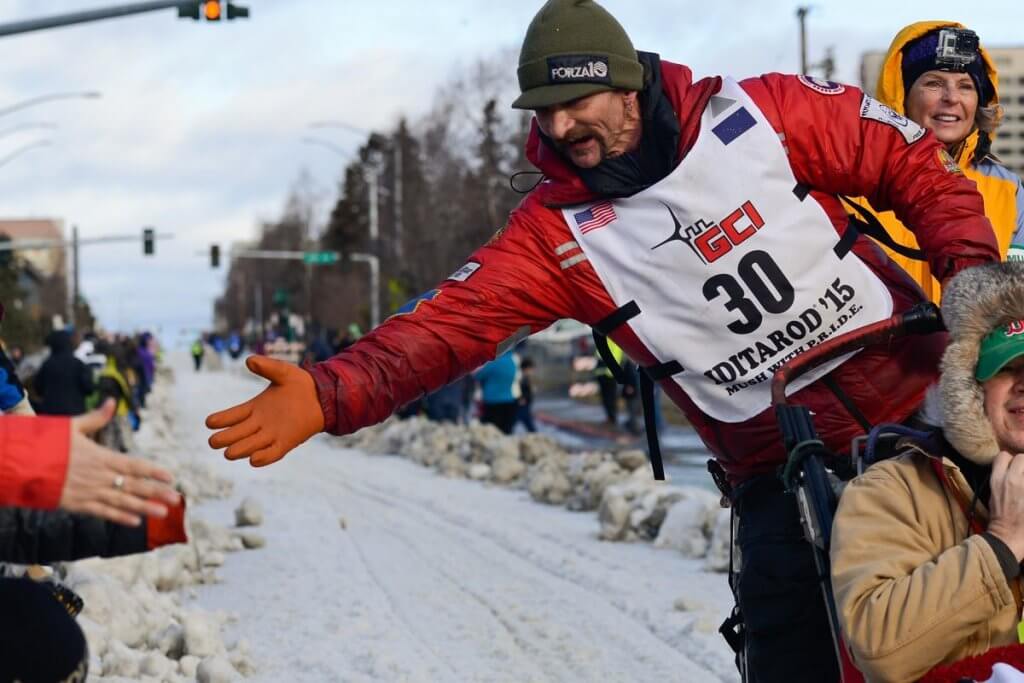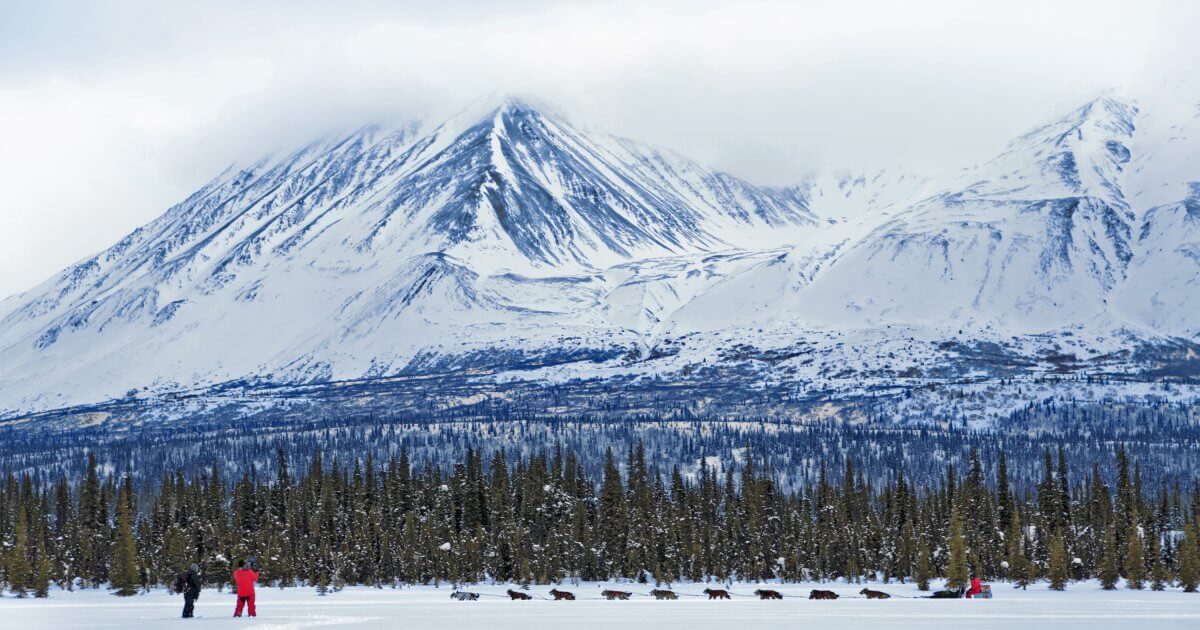Once receiving a cancer diagnosis, some people may choose to slow down and take some time to rest. Well, that’s not the case for Lance Mackey, who found out he had been diagnosed with throat cancer but still was determined to participate in his most beloved sport the famous and physically excruciating Iditarod Trail Sled Dog Race.
Watch The Great Alone On SNTV
Mackey, 50, is a four-time Iditarod champion, a highly competitive dog sled race in Alaska where people all across the world travel to compete. The competition requires each participant (also known as mushers) to be led by 14 dogs and travel across 1,000 miles of ice, snow, rocks, and hazardous weather conditions over the course of 8 to 15 days. It’s a grueling process, but for Mackey it’s an activity he looks forward to every year.
Read More Competing in the Iditarod is challenging enough, but in Mackey’s documentary The Great Alone, the champion describes his experience preparing for the world’s toughest sports competitions when he found out about his throat cancer diagnosis in 2001. Once hearing the news, one might assume he’d call off competing in order to immediately receive treatment. Think again. Despite his diagnosis, Mackey continued to enroll in the 2002 race but unfortunately didn’t clench victory. Once leaving the 2002 race, he underwent radiation therapy for treatment, and was declared “cancer free.”
Competing in the Iditarod is challenging enough, but in Mackey’s documentary The Great Alone, the champion describes his experience preparing for the world’s toughest sports competitions when he found out about his throat cancer diagnosis in 2001. Once hearing the news, one might assume he’d call off competing in order to immediately receive treatment. Think again. Despite his diagnosis, Mackey continued to enroll in the 2002 race but unfortunately didn’t clench victory. Once leaving the 2002 race, he underwent radiation therapy for treatment, and was declared “cancer free.” Lance Mackey’s Victory After Cancer
Due to the radiation therapy, Mackey experienced side effects such as nerve damage, which caused unbearable pain in his finger and he was forced to remove it. Despite missing a finger and being fresh out of cancer treatment, Mackey immediately started training for the next competition. Clearly, it paid off, because Mackey won his first the Iditarod in 2007, and clenched victory three consecutive years after his first win. While some may wonder why Mackey would put himself through such an excruciating experience after already facing a life-changing diagnosis. Well, because this tradition is something that runs in his family.
His father, Dick Mackey, not only was one of the the founders of the Iditarod, but competed in the competition when Mackey was a child. He narrowly won the competition in 1978. Mackey has seen his father compete in life-threatening competition throughout his entire life, and now it’s his own personal calling. As an official cancer survivor, Mackey has not only overcome one of the biggest challenges he’ll face in his life, but achieved his life long dream four times over.
History Of The Iditarod
The Iditarod Trail Sled Dog Race was created in 1973, but its roots dates back even farther. In 1925, Dr. Curtis Welch in Alaska feared that an epidemic was hitting his town after many children were dying from lethal respiratory diseases. In order to help residents, Dr. Welch traveled 1,000 miles in freezing January temperatures to secure antitoxin serums since planes could not fly to Anchorage in the weather conditions. He recruited a team of dog sleds to help him, and this life or death mission inspired the Iditarod.
Due to the race taking place in March, mushers and their dogs race through blizzards, ice storms, sub-zero temperatures, and severe windstorms that can reach -100 degrees while traveling from Anchorage to Nome, Alaska. With just a sled, mushers must pass over tundra, spruce forests, hills, mountain passes, and rivers. It is known to many as the toughest race in the world, and one of the most grueling sports challenges in existence.

Learn more about SurvivorNet's rigorous medical review process.


